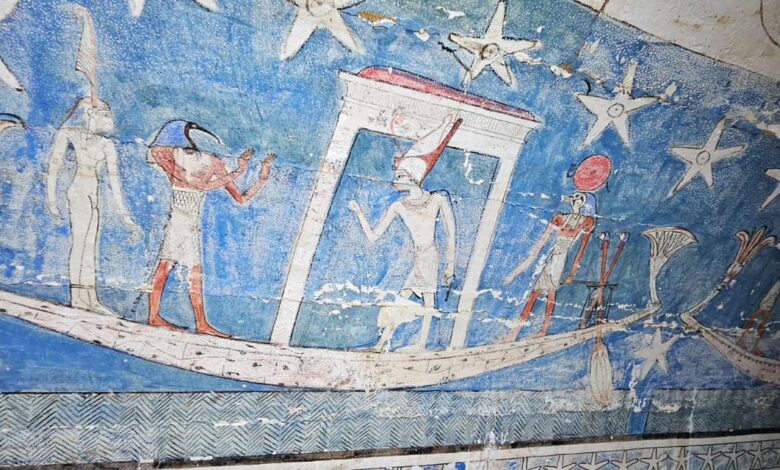
The joint Egyptian-Spanish archaeological mission between the University of Barcelona and the Institute of the Ancient Near East working in the archaeological area of Bahnasa in Minya Governorate have uncovered tombs dating back to the Ptolemaic era, containing several mummies, skeletons, coffins and other unique archaeological finds.
The Secretary-General of the Supreme Council of Antiquities Mohamed Ismail Khaled on Saturday said that for the first time in the archaeological area of Bahnasa, human remains were found – containing 13 gilded tongues and gilded human nails of mummies from the Ptolemaic era.
He added that this is in addition to texts and scenes depicting an ancient Egyptian figure, some of which appear for the first time in the area of Bahnasa.
This discovery provides a great addition to the history of the region and sheds light on the religious practices prevalent in the Ptolemaic era, the minister said.
A professor at the Faculty of Archaeology of Cairo University and director of the mission’s excavations, Hassan Ibrahim Amer, explained that in one of the discovered tombs, a heart scarab was found in its place inside the mummy, in addition to finding 29 amulets of the Djed column, two scarabs for deities such as Horus, Thoth, and Isis, and amulets depicting the three deities together.
The head of the mission from the Spanish side, Esther Pons Mellado, said that during the excavation work, the mission was able to find a rectangular stone burial chamber leading to a Ptolemaic cemetery containing a main hall leading to three rooms containing dozens of mummies lined up side by side.
She explained that this indicates that these rooms were all used as a mass grave.




